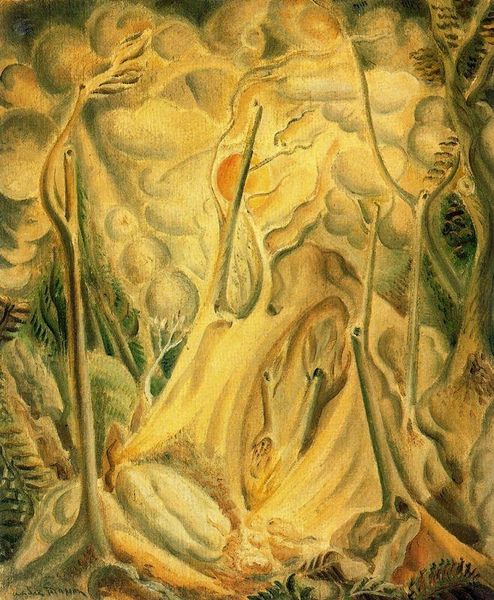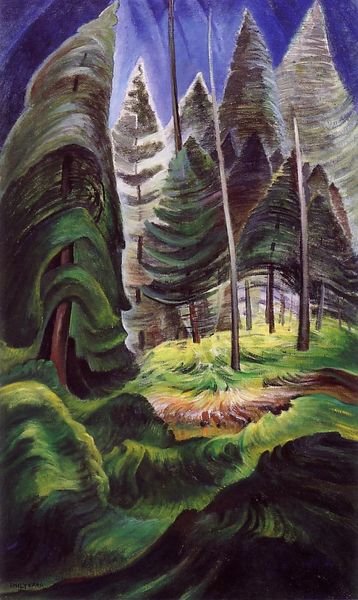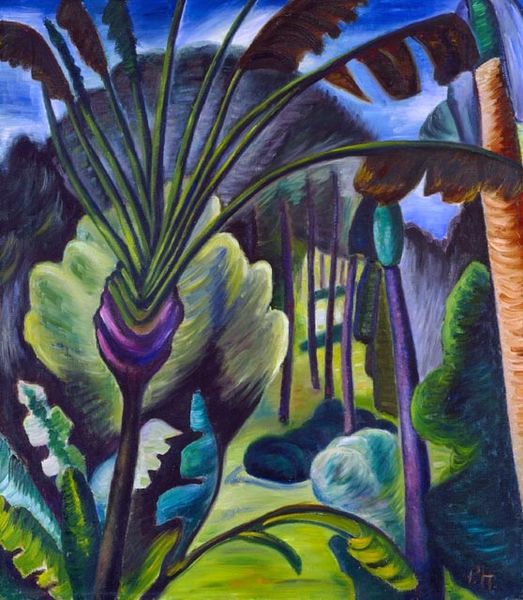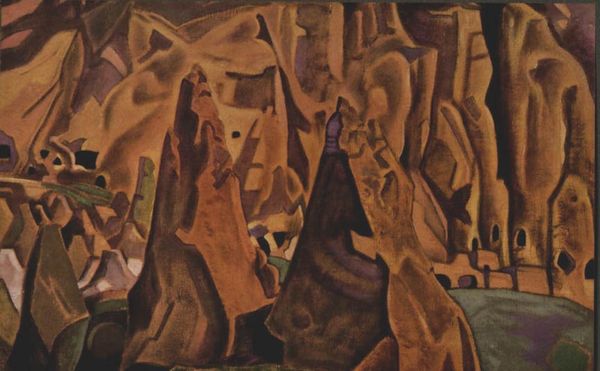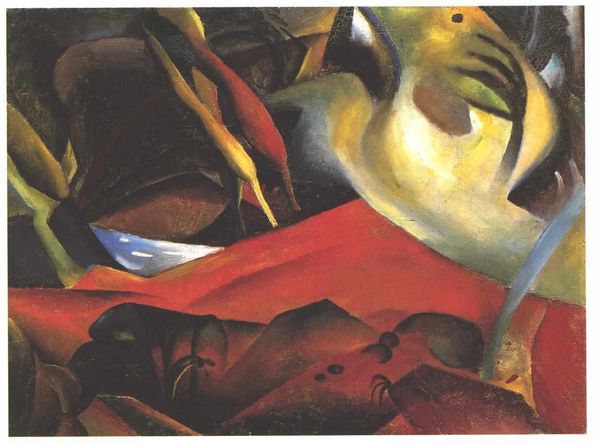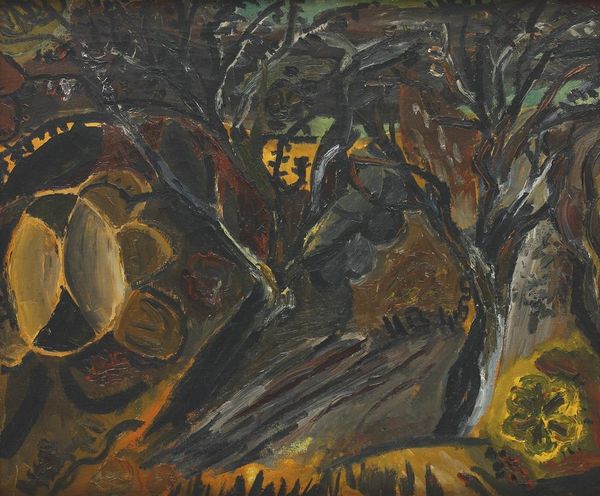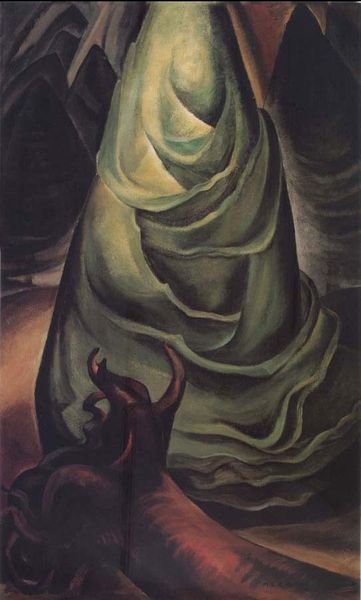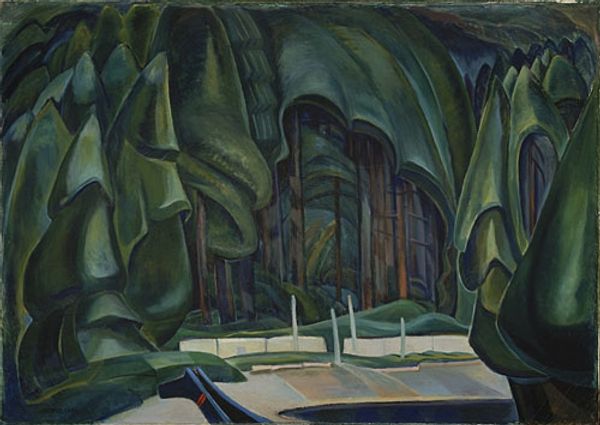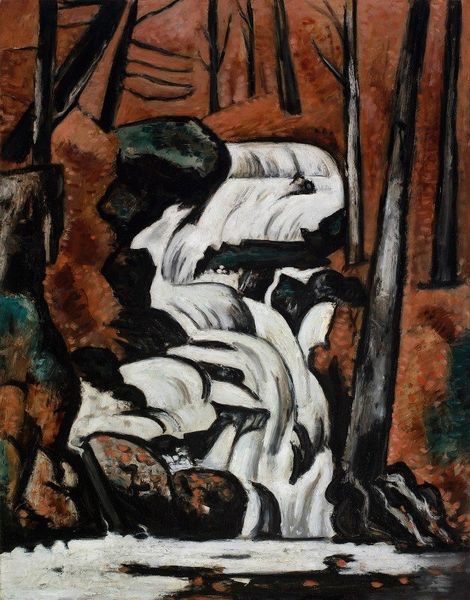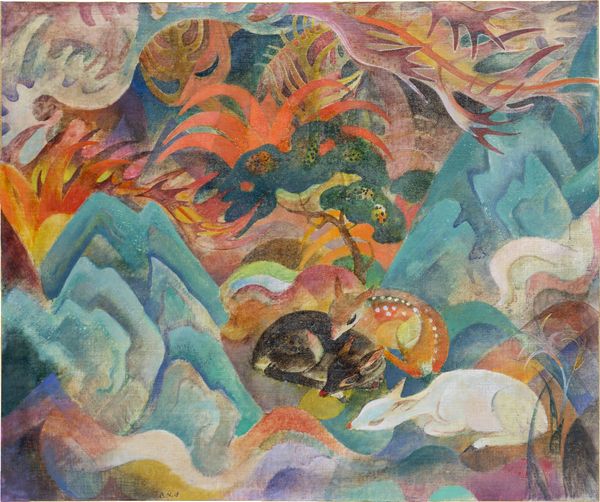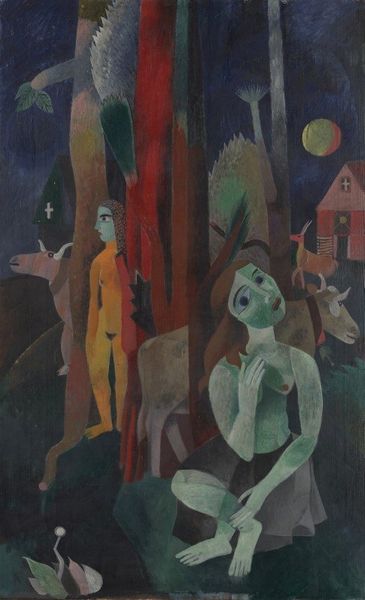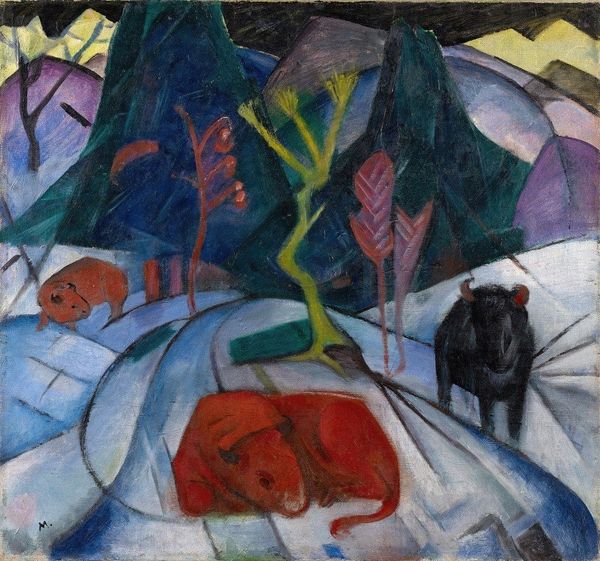
Copyright: Public domain
Curator: "Sea Drift at the edge of the forest"—oil on canvas from 1931—was realized by Canadian artist Emily Carr. Editor: Immediately I’m struck by the contrast between the brooding forest and this vibrant burst of…something… in the foreground. Is it supposed to be seafoam? It almost feels alive. Curator: Yes, exactly. It's meant to depict the frothy sea meeting the dense coastal rainforest. It’s all energy! The composition is rather unusual, isn't it? Vertical thrust of the trees meets the horizontal churn. I almost get seasick just looking at it. Editor: In terms of its broader implications, it reflects the way that Canadian nationalism and environmental consciousness intersected during the interwar period. Consider Carr’s choice to focus on the coastal regions. Indigenous people have stewarded these environments for centuries, but settler colonialism has violently dispossessed those populations. Was Carr invested in those tensions? Curator: That's a vital question to raise! For Carr, I think she felt a spiritual kinship with the land, shaped by her encounters with Indigenous cultures and their deep connection to the natural world. She saw nature as this vital force, beyond the colonial gaze, an understanding tinged with appropriation to be sure, but a deeply felt spiritual exchange, I believe. I mean, just look at the swirling brushstrokes, like everything’s vibrating with unseen power! Editor: Certainly, there is a powerful dynamism here. But that romantic view tends to eclipse these power imbalances I mentioned. How might Carr be perpetuating a kind of settler mythologizing, even if unintentionally, through these landscapes? And these expressions could speak about dispossession while still invisibilizing its victims? Curator: It's complex. There’s reverence, yes, but as you’ve noted, we cannot ignore how Carr's vision perhaps romanticized a landscape shaped by displacement. Maybe what appears to be “empty wilderness” has always been inhabited by native inhabitants? Editor: Precisely. Carr’s work presents a powerful, complicated statement that invites us to interrogate both its artistic merit and its position within a larger social fabric. The raw intensity remains undeniably captivating. Curator: A visceral painting for sure, I guess it invites all of us to acknowledge these multiple truths contained in this small pocket of sea and forest, visible within the same frame.
Comments
No comments
Be the first to comment and join the conversation on the ultimate creative platform.
